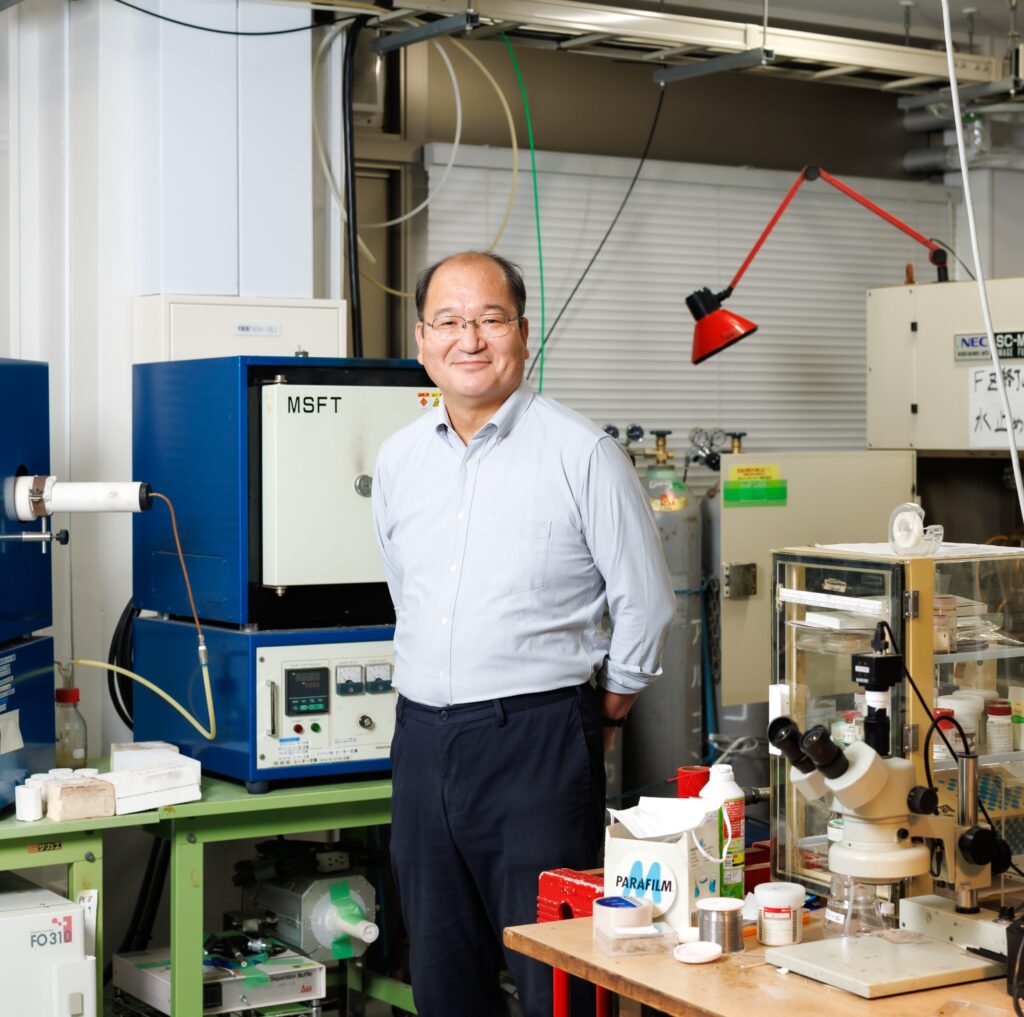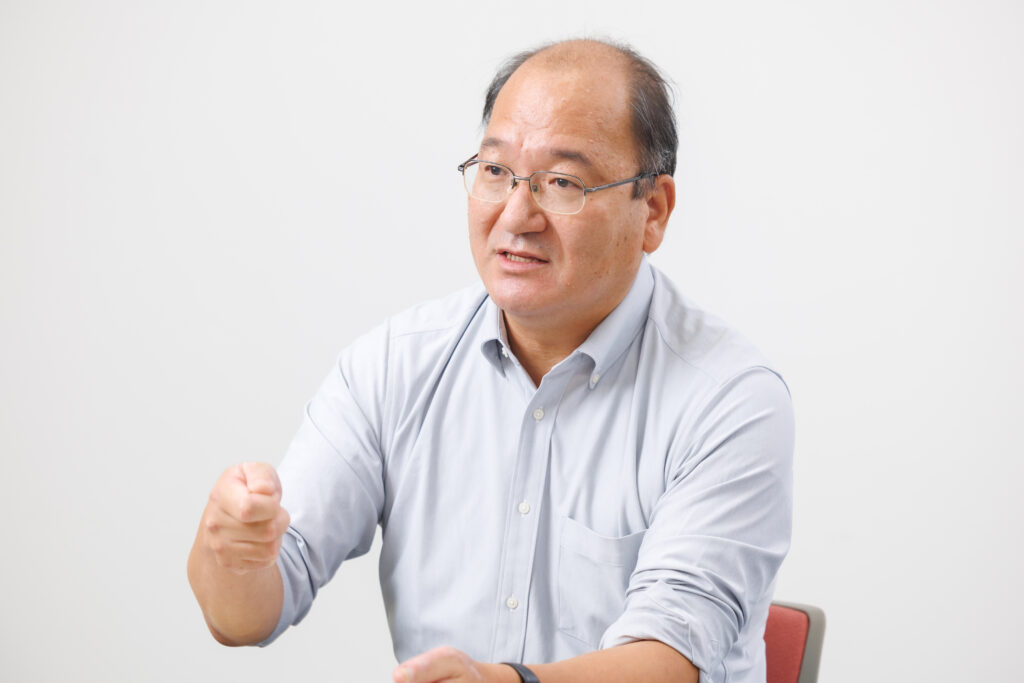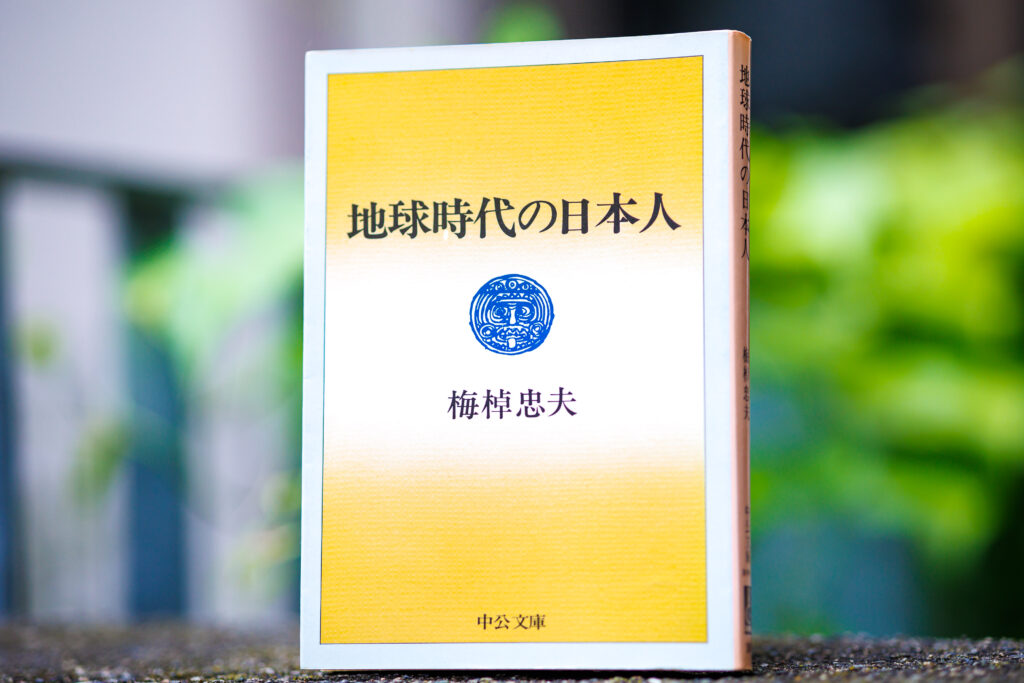
Professor Hideki Kuwahara of the Faculty of Science and Technology is developing “transition metal oxides,” which exhibit both electrical and magnetic properties. He talks about what he finds interesting with his research, including the process of incorporating developed materials into familiar products, and how unexpected results went on to become new materials.
It has been around eighty years since semiconductor devices made from semiconductors were invented in the 1940s. Semiconductors have continued to advance, and are now essential components in integrated circuits, electrical appliances, ATMs, and many other control devices. Yet with growing concerns about the performance limit of semiconductors, development of new materials that will serve as substitutes is picking up pace. “Transition metal oxides” that I focus my studies on are one of those substitutes. These are compounds made from oxygen and metallic elements in groups 3 to 11 of the periodic table, like copper, iron, and chromium.
A characteristic of transition metal oxides is that they have the properties of both electricity and magnetism. Their compounds also exhibit a range of physical and chemical properties, including superconductivity—where electrical resistance drops to zero—under certain conditions. Transition metal oxides are anticipated to have a broad range of applications, as materials in energy-related fields or materials for information and communication equipment.
New thermal control material used in Hayabusa space probe

Materials that I focus my research on include those found in nonvolatile memory used for storage devices in computers, and materials for controlling solar heat used in space probes. Nonvolatile memory refers to memory that retains its stored content even when no power is supplied. Memory that is currently used in computers has high read and write speeds, but requires a power supply. If nonvolatile memory capable of operating at the same speed can be developed, it would lead to greater energy efficiency.
Thermal control materials used in space probes are essential for spacecraft that are directly affected by sunlight outside the Earth’s atmosphere. Some of the transition metal oxides that we developed emit heat when they are at high temperatures, but retain heat at lower temperatures—these materials have already been used in thermal control panels mounted on the Hayabusa and Hayabusa 2, as a result of joint research with Japan Aerospace Exploration Agency (JAXA). Even now, we are still making improvements aimed at enhancing the functionality of these materials.
My research process involves designing materials based on our current level of understanding, and then actually producing that material. The properties of the completed material are then tested with a range of equipment—this process is repeated again and again. The properties of a completed material can vary depending on the way it is compounded or processed. Some material is made just as we designed, but there are many cases where the material does not turn out as expected.
Today’s research results will hopefully play a role for technology in 50 years’ time
Yet it is not rare to discover characteristics that were completely unanticipated—this is what makes this research so interesting. Back in the early days of my research, I found that materials being made from the neodymium rare-earth metal have a surprisingly high level of electrical resistance.
Materials we have developed have also ended up being used for applications that were completely different to what we were initially expecting. The thermal control material I mentioned earlier is one such example, where I wrote a paper about it being a material with magnetoresistance. Yet we often hear from other researchers reading the paper suggesting that the material could probably be used for other applications. This field of research might be quite low-profile, but focusing on the research properly and finding positive results mean someone will eventually read through them, and this forms a source of motivation for research.
The pace of technological innovation continues to speed up. Liquid crystal displays and cell phones that did not exist when I graduated from university are everywhere today, and there is no doubt that in half a century, society will be almost unimaginable. As a researcher, I hope to play a role in the technology that will exist in fifty years’ time, and I am working on the challenges we are facing to achieving this goal.
The book I recommend
“Chikyujidai no Nihonjin”(Japanese People in the Global Age)
by Tadao Umesao, Chuokoron-Shinsha

Written by a pioneer of cultural anthropology and fieldwork. This book was released before the word globalization was coined, and covers topics like the way to approach international exchange and issues related to ethnic groups. This book gave me the inspiration to focus on a broad range of research fields.
-
Hideki Kuwahara
- Professor
Department of Engineering and Applied Sciences
Faculty of Science and Technology
- Professor
-
Graduated from Department of Physics, School of Science, Kwansei Gakuin University, and received his M.S. from the Division of Science and Engineering of University of Tsukuba Graduate School and Ph.D in Engineering from the Graduate School of Applied Physics at the University of Tokyo. Joined the Tsukuba Research Center at Sanyo Electric, and worked on the Atom Technology Project, a joint intensive industry-government-academia research projects between the former Ministry of International Trade and Industry and NEDO before working at Sophia University from 1998. In his current position from 2007.
- Department of Engineering and Applied Sciences
Interviewed: October 2022